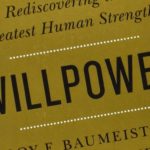Comedy Writing Secrets 2nd Edition by Melvin Helitzer
Comedy Writing Secrets 2nd Edition by Melvin Helitzer: The best-selling book on how to think funny, write funny, act funny, and get paid for it.

The book is divided into three sections. The first part covers the foundations of humor writing, including the theories and principles of humor and why we laugh. The second section describes various humor-writing techniques, such as plays on words, reverses, pairings, triples, and exaggeration. The final section explains how to write humor for popular markets such as greeting cards, speeches, articles, newsletters, and stand-up comedy. This revised edition also includes chapters on humor writing in advertising and the use of humor in education. The book is heavily peppered with examples from all the greats and much more. It gets into so much detail and becomes so scientific I couldn’t take too many notes.
Summary
When the mouth is open for laughter, you may be able to shove in a little food for thought. – Virginia Tooper
I really liked this quote as I see most of my favourite stand-up comics as gurus. They just spread the light with laughter.
The MAP constellation bust always relate to each other.
1. Material. The material must be appropriate to the interests of the audience, and it must relate well to the persona of the performer.
2. Audience. The audience must complement both the material and the presentation style of the performer.
3. Performer. The performer must present the right material to the right audience in the right way.
The reason we laugh comes down to 2 things – Surprise and superiority. The 6 sub reasons are all connected to those two. Instinct, incongruity, ambivalence, release, puzzle solving and regression.
The recipe for humour nearly always has to have the following 6 ingredients – target, hostility, realism, exaggeration, emotion, surprise. Better remembered with the acronym THREES.
I don’t know who did the stats but the book says 25% of the jokes are about sex making it the most joked about topic.
Pregnant pauses are popular. One way of doing it is asking the audience a question, then the build and depending on your audience you do your thing.
POW – Play on words is used 50% of the time. Popular POW techniques are – double entendres, malaprop, oxymoron, pun, reforming, simple truth, take-off. They go deep into each. Like a take-off uses simple truths like the innocence of a child taking each word literally. E.g. I like a girl with a good head on her shoulders, no neck!
When writing be concise. Making it too long is called frosting the flake or stacking the wack. Brent Forrester called it humour and duration principle. Basically the shorter the sweeter.
Brainstorming – Includes association (think mind mapping). You can start of with a cliche, or a cliche on a cliche or something called a Tom Swifty. When writing jokes remember that only 1 out of 10 usually make it. This is why late night shows use about 6 writers just for a 5 minute bit.
Good joke = concise + not revealing keywords + saving the funniest word/phrase till the end.
Construction – You need to make 3 drafts. First one make a list/mind map things associated with the topic and categorise and subcategories. Second – list cliches for each. Third – POW factor, list double entendres, synonyms, antonyms and homonyms. Fourth – Create jokes. And then time it all. For a 5 minute bit you’d need 20 one liners or 7 anecdotes or some kind of mix. The book goes through an in-dept walk-through. Then gives you 4 others ways which are 1 – Work backwards, 2 – Opposites, 3 – Talk instead of writing, 4 – Imagine instead of writing.
Reverses use surprise with a prominent misleading clue. Usually used only once per anecdote. E.g. – I couldn’t wait for success, so I went ahead without it – Jonathan Winters. Some beginners telegraph… big no no. While hiding is the opposite of telegraphing which is basically a surprise punchline when the audience think it’s over. E.g. – Every day people are straying away from the church, and going back to God – Lenny Bruce.
Then you got paired elements. There are three varieties of paired elements.
1. paired phrases or sentences
2. paired words
3. paired numbers
E.g. Better a witty fool than a foolish wit – William Shakespeare
Paired words have synonyms, homonyms, antonyms or groupings. Lots of examples and theory.
Out of all formats comics love triples. William Lang even developed the comedic theory of 3 bits. SAP, Setup (preparation), Anticipation (triple), Punchline (story payoff). The P can be integrated into the 3rd part of A.
Some rules – Don’t use more than 3 jokes on the same subject in a monologue. 3 minutes is ideal for a skit. Don’t exceed 3 themes in an article. Keeping it short is good but you can bump up the imagery with specific graphic descriptions in the punchline.
When using truth, the funny because it’s true concept only works if the audience identifies with the reality of it. To pack a punch you can exaggerate but don’t over exaggerate. The stretch-band theory goes something like… the more to exaggerate (stretch) the higher the pitch of the sound when you pluck the band. Just like the higher the laughs but stretch it too much and it snaps. Best way to find a good balance in exaggeration / overestimating / underestimating is to put the possibilities under 3 headings good, better and best.
TEE (truth, emotion, explicitness) determine if a premise is properly set up. Understatements are excellent for self deprecating humor.
Words with a K sound are the funniest words. These words should be used in the middle of the joke. Funny words have one of these three qualities 1 – funny sound, 2 – double entendre, 3 – association with funny person.
When it comes to numbers, you have to make them stand out.
Obscenity has lost it’s shock value but is still an important ingredient and sometimes the obscenity is the only way to execute the joke. Comedic axiom – Insult only ignoramuses or ugly people. 3 instances not to use hard words, 1 – when the definition rather than shock of word sparks off humor, 2 – when a softer word is more widely accepted and money is an issue, 3 – when soft words will encourage the audience to fill in the blanks. Basically shock humor has limited marketability.
Understatements are an admirable alternative and higher technique of humor writing because it requires understanding, which is a sign of confidence and maturity. The rich and successful understate.
Speech humor – You can use it in 1 – the title, 2 – introducing the speaker (you can write this for the MC introducing you), 3 – intro remarks, 4 – speech body, 5 – closing remarks.
Speech rules – Speak no more than 20 mins, 2.5 words per second so 3000 words, speech sentence are shorter than reading ones like average 14 words per sentence.
Funny speech rules – make sure it’s funny (duh). It should be comfortable for the speaker and audience. Don’t read the joke, memorise it and look at the audience. Personalise and localise it by changing names, places, etc. Never apologise or explain your joke. Don’t use hard spoken words or words that don’t sound good. Give credit when quoting others. Shows courtesy, being well read and keenness on brilliance. It’s OK to repeat a surefire story even if you’ve used it before with a few of the audience. (Really really gets into lots of speech stuff).
The Schtick – Every stand-up has one. You can fit no more than one character because the audience are comfortable with stereotypes. In most cases the character should fit the performers personality, appearance, speech and talent.
(Secret – Before Jay Leno delivers his five-minute monologue each evening on The Tonight Show, he tests his material the night before at a local Orange County comedy club, with an audience similar to his show’s audience profile. His twelve writers provide him with twenty minutes of new jokes, and then the audience helps Leno throw out 75 percent of the test materi- al and get down to the final five minutes he delivers the next evening to a national TV audience. That’s a lot of rejection every day. Professionals are used to those odds. So should you be.)
The twenty masks of comedy are:
THE SINGLE
1. The Jester, 2. The Aggressor, 3. The Sad Sack, 4. The Drug Rebel, 5. The Intellectual, 6. The Political Satirist , 7. The Storyteller, 8. The Rube, 9. The Old Timer, 10. The Ethnic Type, 11. The Immigrant
THE TEAM
12. Partners, 13. The Sketch Performer, 14. The Ventriloquist
THE ACTOR
15. The Impersonator, 16. The Clown, 17. The Artist, Musician, and Cartoonist 18. The Vaudevillian, 19. The Improviser, 20. The Bumbler
Beginners should try different characters before settling on one. After you find the one that fits the real work begins.
Common techniques:
Topper is a follow up joke that builds on previous laugh, should be funnier and shorter.
Running gag/combo is a repeated line.
Call back is a reference to something said earlier.
Saves are usually canned lines used to save you when a joke bombs.
Switching or as Woody Allen calls it ‘the non sequitur is when you start with a familiar story and switch the ending.
Working the audience is asking the audience general and predictable questions. (This one is for pros)
Over to written humour. There are 5 forms. 1 Anecdote, 2 One-line joke, 3 Overstatement, 4 Understatement, 5 Ironic truth.
When writing use more cliche inspired aphorisms, puns, double entendres. A filler has to be something the reader will want to quote or read out loud to a colleague. Written stuff should have a certain timelessness and relevance. E.g. fortune in a cookie ‘Help! I’m a hostage in a fortune cookie factory’. Another e.g. Success is relative. More success, more relatives.
3 major cartoon formats include – 1 single-panel, 2 comic strips, 3 political cartoons. Goes very deep into each.
In fact it goes deep into all sorts of humour for writing. Writing for TV, sit-coms, advertising, businesses, radio, educational humour, etc. Things like when the teacher is on a podium, they should use humour similar to speeches but open with a joke so students get the message that it will be fun. Sandwich humor – So teach a concept, use humor, summarise the principle. Keep anocdotes brief or it’ll get hard to calm the students down.
And finally tips on getting better like practice on others apart from family and friends, collaborate, hire someone, etc. Big up DD for the recommendation.
CONTENTS
Foreword ix
Introduction 1
PART I: THE BASICS OF HUMOR WRITING
Chapter 1: The Importance of Humor Writing
Chapter 2: Why We Laugh
Chapter 3: The Recipe for Humor
PART II: HUMOR WRITING TECHNIQUES
Chapter 4: POW: Play on Words
Chapter 5: More POW: The Simple Truth and the Take-Off
Chapter 6: POW Brainstorming Techniques
Chapter 7: The Next Giant Step: Reverses
Chapter 8: The Harmony of Paired Elements: Phrases, Words, Statistics, and Aphorisms
Chapter 9: Bewitched, Bothered, and Bewildered: Triples
Chapter 10: Realism, Exaggeration, and Understatement
Chapter 11: Funny Words and Foul Language
PART III: WRITING HUMOR FOR SPECIFIC MARKETS
Chapter 12: Testing, Testing, One, Two, Three: Writing Humor for Speeches
Chapter 13: Stand-Up or Sit Down: Humor for Live Entertainers
Chapter 14: Print Humor: Columns, Articles, and Fillers
Chapter 15: Saw the Picture, Loved the Gag: Humor for Cartoons and Greeting Cards
Chapter 16: The Scarce Comedy: Writing for TV Sitcoms
Chapter 17: We Mean Business
Chapter 18: Teach, Learn, and Laugh
Chapter 19: That’s a Wrap
Appendix:
Glossary 333
Index 337



